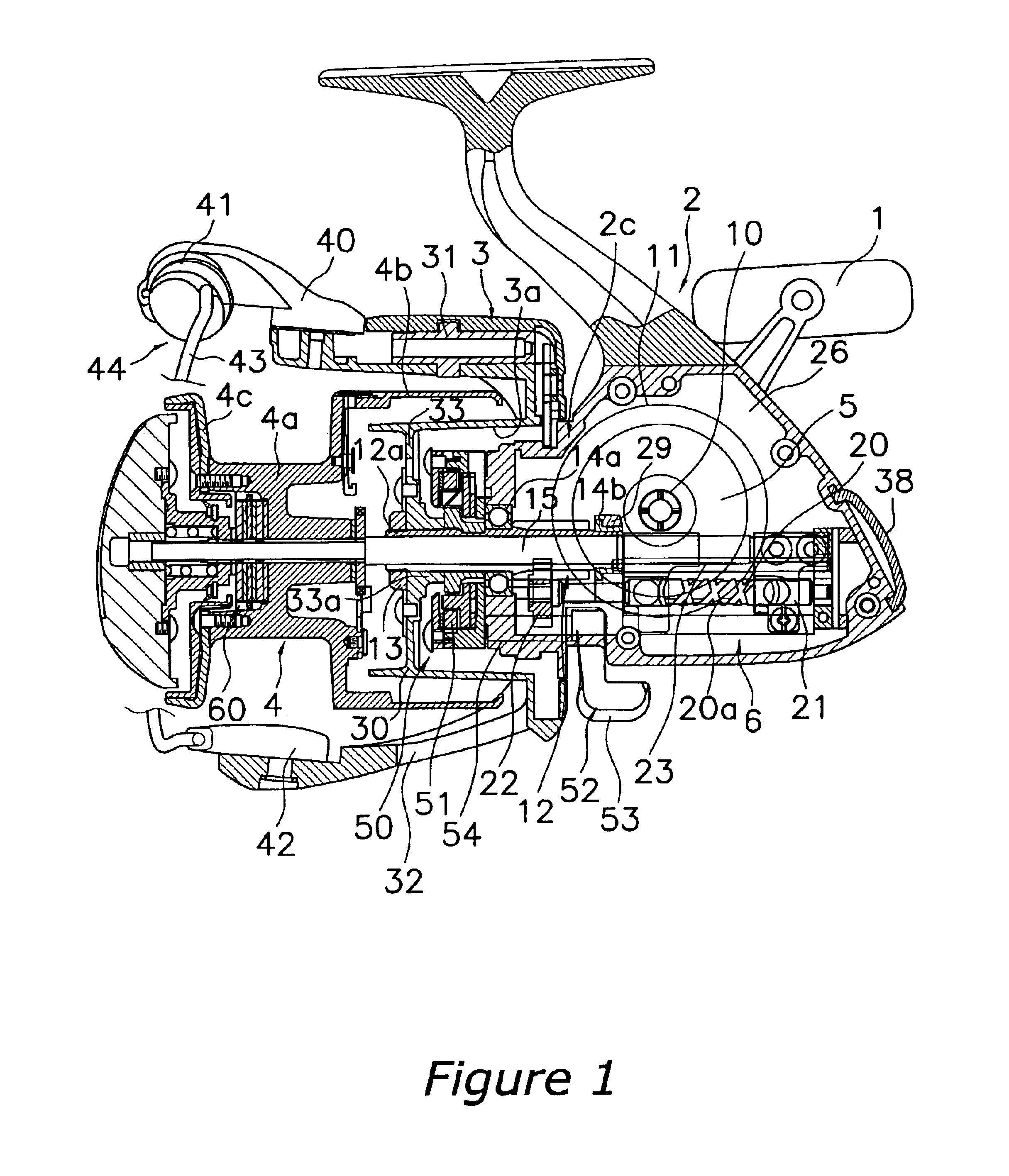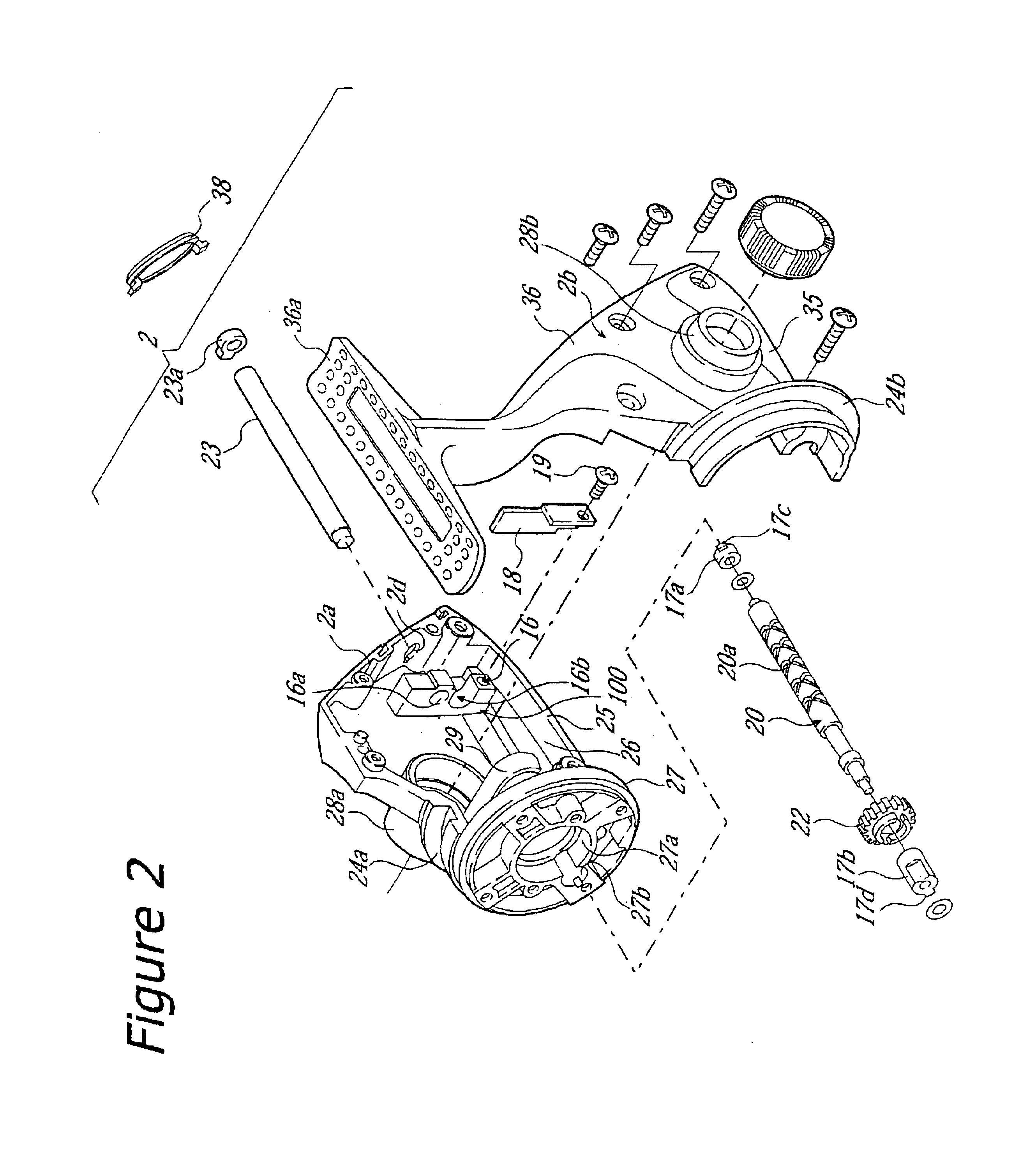Worm shaft attachment structure for spinning reel
a technology of worm shaft and attachment structure, which is applied in the field of worm shaft attachment structure, can solve the problems of difficult to ensure the difficult to maintain and difficult to form the concave hole and the through hole concentrically with high precision, so as to achieve the effect of reducing the restriction on design options and ensuring the attachment precision of the worm sha
- Summary
- Abstract
- Description
- Claims
- Application Information
AI Technical Summary
Benefits of technology
Problems solved by technology
Method used
Image
Examples
Embodiment Construction
Selected embodiments of the present invention will now be explained with reference to the drawings. It will be apparent to those skilled in the art from this disclosure that the following description of the embodiments of the present invention is provided for illustration only, and not for the purpose of limiting the invention as defined by the appended claims and their equivalents.
Referring initially to FIG. 1, a spinning reel is illustrated in accordance with a first embodiment of the present invention.
As shown in FIG. 1, a spinning reel in accordance with an embodiment of the present invention is a large spinning reel, which is provided primarily with a reel unit 2 that rotatably supports a handle 1 and is to be mounted to a fishing rod, a rotor 3, a spool 4, a rotor driving mechanism 5 and an oscillation mechanism 6. The rotor 3 is for winding fishing line on the spool 4 and is supported rotatably at the front of the reel unit 2. The spool 4 is for winding fishing line around it...
PUM
 Login to View More
Login to View More Abstract
Description
Claims
Application Information
 Login to View More
Login to View More - R&D
- Intellectual Property
- Life Sciences
- Materials
- Tech Scout
- Unparalleled Data Quality
- Higher Quality Content
- 60% Fewer Hallucinations
Browse by: Latest US Patents, China's latest patents, Technical Efficacy Thesaurus, Application Domain, Technology Topic, Popular Technical Reports.
© 2025 PatSnap. All rights reserved.Legal|Privacy policy|Modern Slavery Act Transparency Statement|Sitemap|About US| Contact US: help@patsnap.com



